By Glen Quagmire
 Last time we discussed the basics of collector car auctions — the companies that run them, the nature of the people who most often show up to buy or sell, and what you can expect if you decide to drop into an auction for an enjoyable day or two’s worth of entertainment and enlightenment.
Last time we discussed the basics of collector car auctions — the companies that run them, the nature of the people who most often show up to buy or sell, and what you can expect if you decide to drop into an auction for an enjoyable day or two’s worth of entertainment and enlightenment.
This time we’ll dig a little deeper and discuss the procedures involved in actually buying (or at least bidding) or selling at a collector car auction, along with a discussion of the people and policies involved in the process. And, finally, we’ll share a caution or two that might benefit your piggy bank, your sanity, and maybe even your marriage.
If You’re Buying…
In order to bid on, or buy, a car at a collector car auction, you need to register with the auctioneer. There’s a fee to register, which can vary from a modest figure up to several hundred dollars, depending on the scope and prestige of the event. You’ll also have to provide identification, like a driver’s license, and you may have to show that you have proof of insurance on an existing vehicle (so that a car you might buy will be automatically covered for a period of time – often 30 days, depending on your policy).
Perhaps most important, you’ll have to provide evidence that you have enough money in your possession to pay for a car you might buy. Depending on the auctioneer, they may accept a certified or cashier’s check or cash, and most will happily accept a letter of credit from your bank that you can draw against. If you’re thinking about buying a car at auction, be sure to check the auctioneer’s terms before you go.
And while you’re doing your homework beforehand, be sure to check for other costs and fees. Nearly all auctioneers add a Buyer’s Premium to the gavel price of a car (hey, they’ve gotta eat too…). Typically this fee is several percentage points of the gavel price.
If You’re Selling…
 If you have a car you’d like to sell at a collector car auction, you’ll typically pay a flat fee to have your car included in their auction, called a consignment fee, plus you’ll pay a Seller’s Premium – a commission – as a percentage of the selling price. This fee helps serve as an incentive for the auctioneer to get as high a price as possible for your vehicle. Expect the auctioneer to require you to bring a clear title so ownership can be transferred on the spot.
If you have a car you’d like to sell at a collector car auction, you’ll typically pay a flat fee to have your car included in their auction, called a consignment fee, plus you’ll pay a Seller’s Premium – a commission – as a percentage of the selling price. This fee helps serve as an incentive for the auctioneer to get as high a price as possible for your vehicle. Expect the auctioneer to require you to bring a clear title so ownership can be transferred on the spot.
Certainly you’ll want to present your car in the best possible condition, so prepare and detail it as much as humanly possible. Also, provide and display all documentation and history you have available, including photographs showing any restoration or major repairs performed, in order to demonstrate the value of your car.
What’s the Deal With a Reserve?
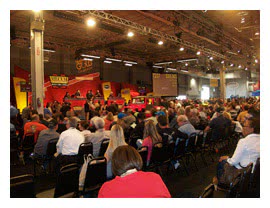 A reserve is a minimum price the seller agrees to accept, and is established when the owner agrees to have it auctioned. This reserve price is not divulged until bidding is complete, and serves as a sort of “insurance policy†that the seller will not see his car sold for an unacceptably low bid.
A reserve is a minimum price the seller agrees to accept, and is established when the owner agrees to have it auctioned. This reserve price is not divulged until bidding is complete, and serves as a sort of “insurance policy†that the seller will not see his car sold for an unacceptably low bid.
There are plusses and minuses to having a reserve price. As noted, the reserve does offer some protection to the seller, but it also may discourage bidders who don’t know for sure that the gavel bid will actually result in a purchase. Also, when bidding does not reach a seller’s reserve price, the auctioneer does not receive either a buyer’s or seller’s premium. So the auctioneer usually establishes a different fee structure when a seller chooses to set a reserve price, so that the auctioneer gets paid regardless of how the seller chooses to sell.
Also, a seller has the option to “lift the reserve†at any time during the bidding process. So if the seller has set a reserve price and the bidding approaches that price, he may “lift the reserve†so that the car will indeed change hands when the gavel drops. Often, when a seller lifts the reserve, bidding accelerates, since buyers know a sale is certain, and in many cases the bidding actually goes on to exceed the reserve that was initially set.
Who Are Those People in the Tuxedos?
The more upscale and prestigious auctions employ “bidders’ assistants,†who basically serve several purposes. They help auctioneers notice every possible bidder, which is important when there are a large number of bidders present. They also serve as intermediaries to communicate a bid to the auctioneer so that bidders don’t have to shout to be noticed.. But perhaps the most valuable service they perform, at least from the auction company’s perspective, is to provide face-to-face encouragement to bidders to raise the ante “just one more time; just a thousand dollars more, and that car can be yours…â€
Finally Buyer Beware…
This point can’t be made often enough or loudly enough. Buyer beware. At auction, all sales are final (and properly so…). So do your homework and know what you want to buy and how much you want to pay. It’s very easy to get caught up in the excitement of an auction, and it’s easy to find yourself in a bidding war based on adrenalin. Also, bear in mind that you don’t have a lot of time to evaluate a car prior to purchase, and you aren’t likely to have the opportunity to raise a car on a lift to evaluate the undercarriage for degree of restoration, originality, or signs of previous damage or repair.
 There are no guarantees, no returns, no recourse; once you’ve bought it, you’ve bought it.
There are no guarantees, no returns, no recourse; once you’ve bought it, you’ve bought it.
Also, understand that people and things are not always what they appear to be. The country bumpkin you’re bidding against may well be a shrewd collector car broker, and may even be the representative of a celebrity who doesn’t want his/her identity known. And, for all you know, the person you’re bidding against could even be the seller, who’s trying to boost your bid for his car.
The best thing you can do is to do your homework, tame your adrenalin, and steer clear of the bar until the day is done, and deal with a reliable, well-established auction company who will do their part in assuring clear title and representation as honest as they can make it.
After that, it’s up to you.
Resources:
Hemming’s Motor News: www.Hemmings.com
Sports Car Market: www.SportsCarMarket.com
Major collector car auction companies:
Barrett-Jackson: www.Barrett-Jackson.com
Mecum:www.Mecum.com
Carlisle Auctions: www.CarlisleAuctions.com
RM Auctions: www.RMauctions.com
Russo and Steele: www.RussoandSteele.com
Gooding and Company: www.GoodingCo.com
The Branson Auction: www.BransonAuction.com

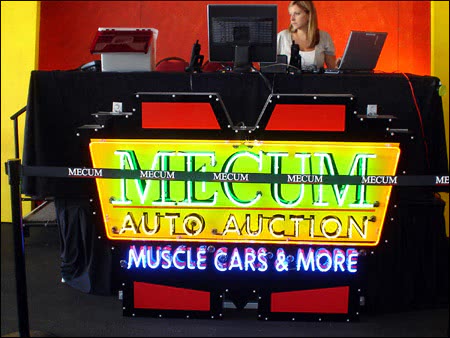
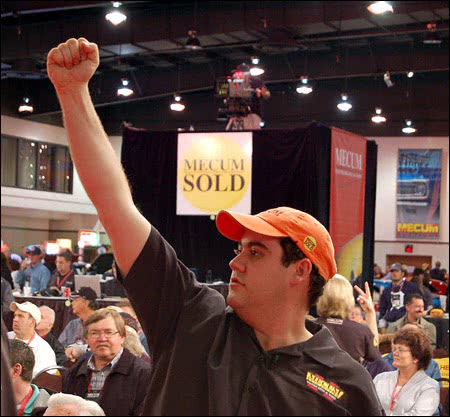
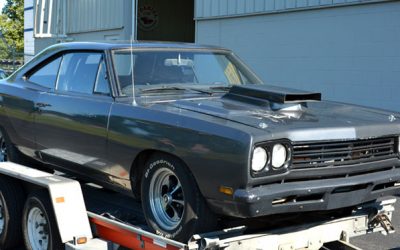
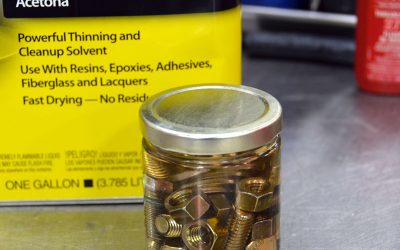
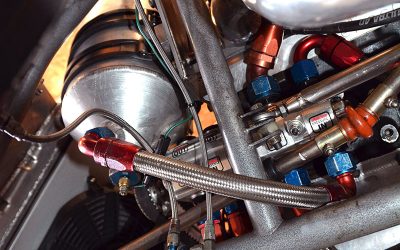
0 Comments